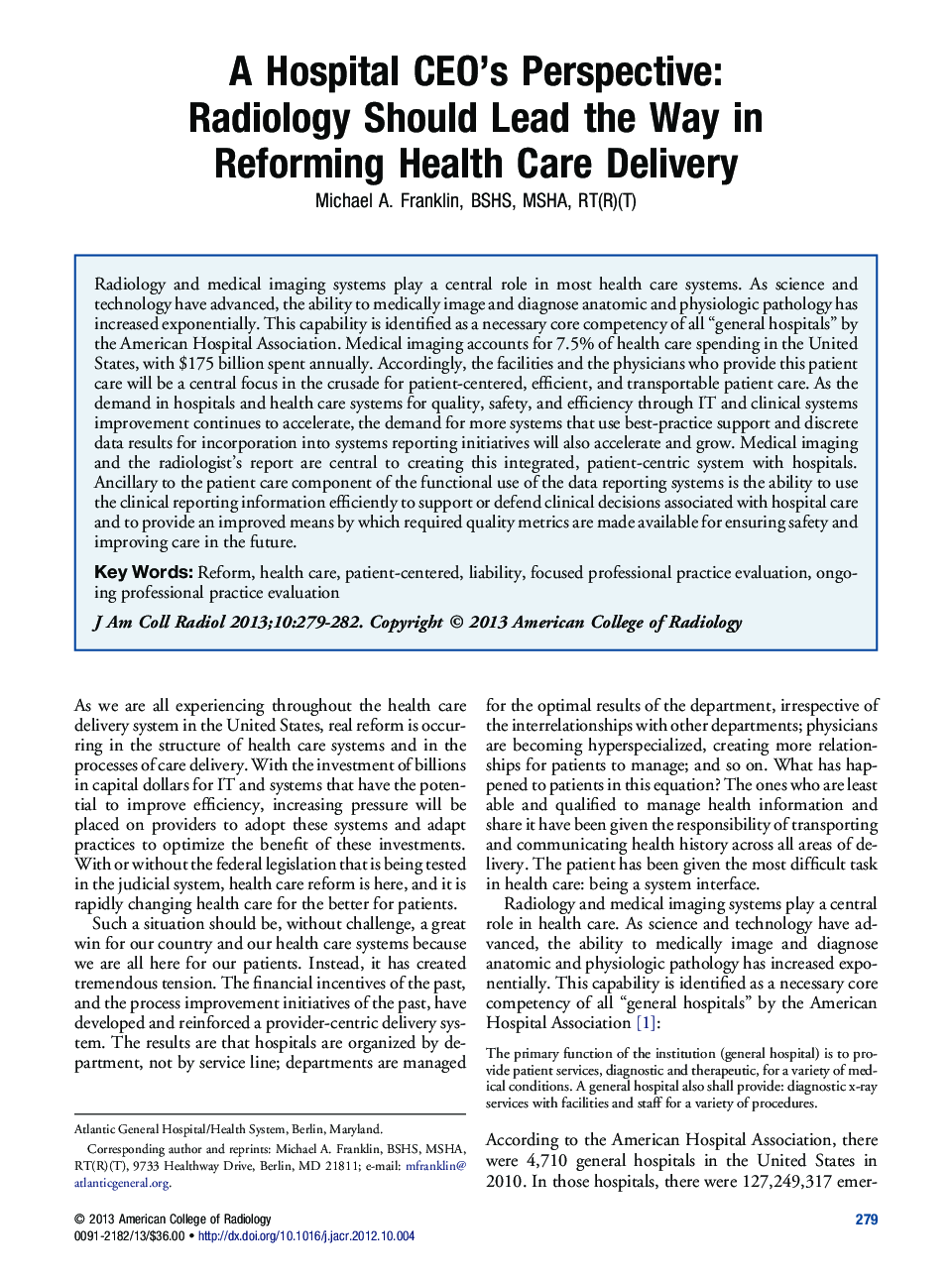| Article ID | Journal | Published Year | Pages | File Type |
|---|---|---|---|---|
| 4231141 | Journal of the American College of Radiology | 2013 | 4 Pages |
Abstract
Radiology and medical imaging systems play a central role in most health care systems. As science and technology have advanced, the ability to medically image and diagnose anatomic and physiologic pathology has increased exponentially. This capability is identified as a necessary core competency of all “general hospitals” by the American Hospital Association. Medical imaging accounts for 7.5% of health care spending in the United States, with $175 billion spent annually. Accordingly, the facilities and the physicians who provide this patient care will be a central focus in the crusade for patient-centered, efficient, and transportable patient care. As the demand in hospitals and health care systems for quality, safety, and efficiency through IT and clinical systems improvement continues to accelerate, the demand for more systems that use best-practice support and discrete data results for incorporation into systems reporting initiatives will also accelerate and grow. Medical imaging and the radiologist's report are central to creating this integrated, patient-centric system with hospitals. Ancillary to the patient care component of the functional use of the data reporting systems is the ability to use the clinical reporting information efficiently to support or defend clinical decisions associated with hospital care and to provide an improved means by which required quality metrics are made available for ensuring safety and improving care in the future.
Related Topics
Health Sciences
Medicine and Dentistry
Radiology and Imaging
Authors
Michael A. BSHS, MSHA, RT(R)(T),
